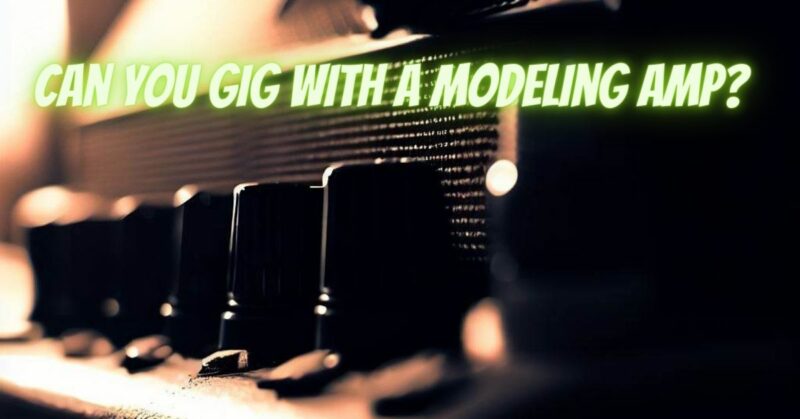The stage is set, the lights are dimmed, and the crowd anticipates the electrifying sound of live music. As a guitarist, you might wonder if a modeling amp can hold its own in a gigging environment. The question arises: Can you confidently bring a modeling amp to the stage and deliver a performance that captivates both you and your audience? Let’s explore the capabilities and considerations of using a modeling amp for live performances.
Modeling Amps in a Live Setting:
Modeling amps have evolved significantly in recent years, making them viable contenders for live gigs. Their ability to replicate a diverse range of amp models, effects, and tones within a single unit can prove invaluable in a performance context.
Advantages of Using a Modeling Amp for Gigs:
- Tonal Versatility: One of the greatest strengths of a modeling amp is its versatility. From vintage cleans to high-gain metal tones, modeling amps can emulate a wide spectrum of sounds, making them adaptable to various musical genres.
- Reduced Setup Complexity: Instead of lugging multiple amplifiers and pedalboards to a gig, a modeling amp allows you to streamline your setup. This convenience is particularly appealing if you’re limited on space or have logistical constraints.
- Quick Tone Switching: Many modeling amps feature preset options that enable you to switch between different sounds with the press of a footswitch. This seamless transition between songs eliminates downtime and keeps your performance dynamic.
- Direct Outputs and Monitoring: Modeling amps often include direct outputs for connection to front-of-house (FOH) systems or recording interfaces. This ensures that your meticulously crafted tones reach the audience without the need for miking your amp.
- Consistency: Modeling amps offer consistent sound reproduction across different venues. This can be particularly helpful in maintaining a consistent sound for your band, regardless of the size or acoustic properties of the venue.
Considerations for Gigging with a Modeling Amp:
- Sound Quality: The sound quality of a modeling amp is critical. High-end modeling amps are designed to provide authentic tones that are suitable for live performances. However, it’s important to ensure that the amp’s tones sound pleasing to your ears and complement your band’s overall sound.
- Backup Plan: Like any piece of equipment, there’s always a chance of technical issues. Consider having a backup plan in case your modeling amp malfunctions during a gig. This could involve carrying a spare amp or having a backup preset loaded on another device.
- Ease of Use: During a live performance, you’ll need to access your desired tones quickly. Familiarize yourself with your modeling amp’s user interface and preset organization to ensure smooth transitions between songs.
- Personal Sound Preference: While modeling amps offer a variety of tones, some players might have specific preferences that require more specialized equipment. If your musical identity hinges on a distinct vintage amp sound, for example, you might still opt for a physical tube amp.
Preparing for Success:
Before gigging with a modeling amp, take the following steps to ensure a successful performance:
- Sound Check: Arrive early for sound check to dial in your tones and make any necessary adjustments to fit the venue’s acoustics.
- Backup Presets: Program backup presets in case of unexpected technical issues during your performance.
- Practice and Familiarity: Spend ample time rehearsing with your modeling amp to ensure you can quickly access your desired tones and effects.
- A/B Testing: If possible, perform A/B testing by comparing your modeling amp’s tones with the sound of your bandmates’ gear to ensure tonal cohesion.
In conclusion, gigging with a modeling amp is entirely feasible, especially with the advancements in technology and sound quality. The convenience, versatility, and direct outputs make modeling amps an attractive option for live performances. As long as you’ve thoroughly tested your setup, are comfortable with your tones, and have contingencies in place, you can confidently step onto the stage with your modeling amp and deliver an unforgettable musical experience.


